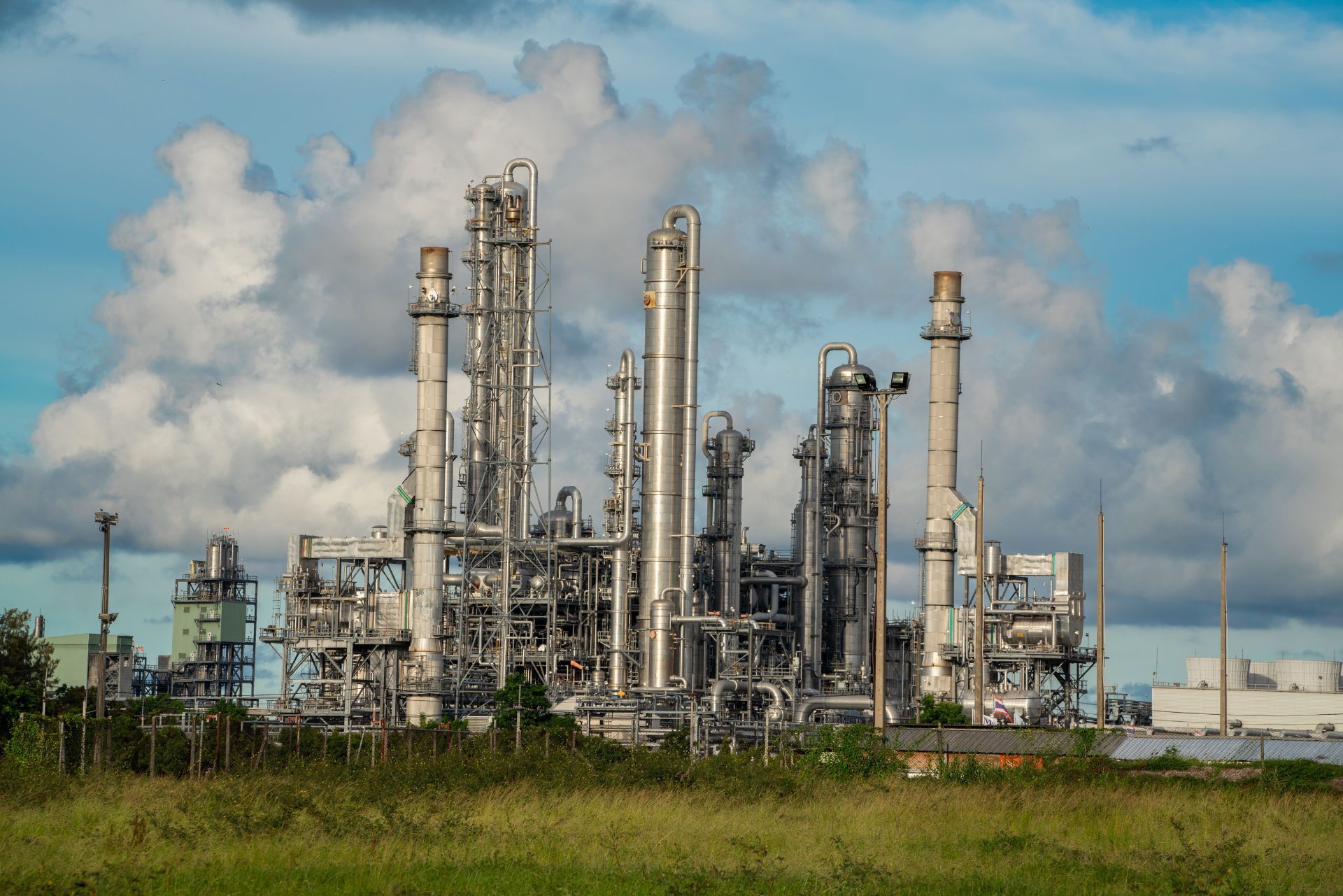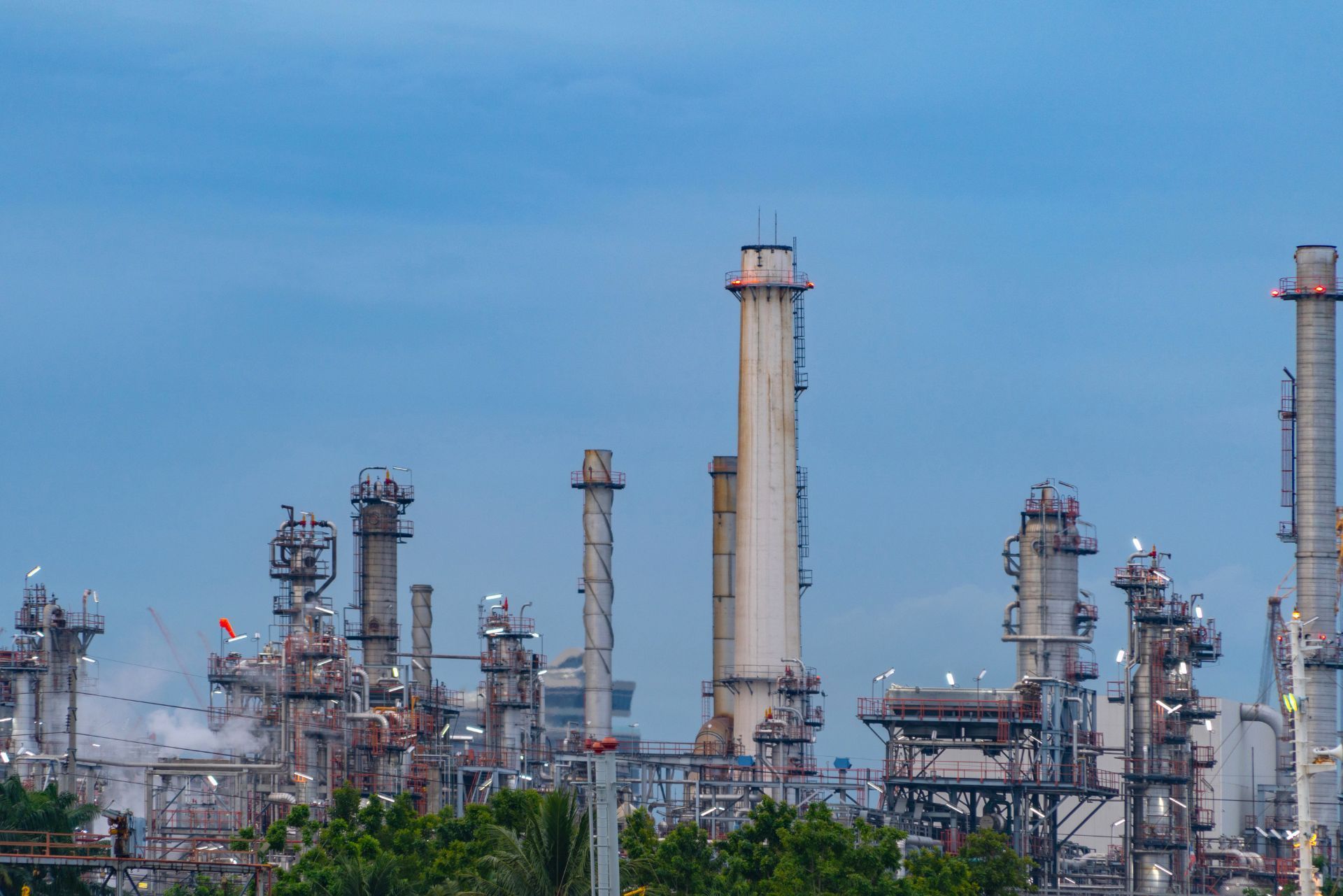Top 3 Recommended Policies

Operating an oil refinery involves managing complex processes and significant risks. From volatile chemical reactions to large-scale equipment, the potential for accidents and operational disruptions is high. This makes insurance a critical component in safeguarding refinery assets, finances, and overall business continuity. Understanding the nuances of oil refinery insurance is essential for refinery operators, investors, and stakeholders alike.
As global refining capacity continues to evolve—with projections indicating a substantial increase in refinery runs worldwide—insurance needs are also shifting. According to industry reports, global refinery runs are expected to grow by 660,000 barrels per day in 2025, emphasizing the scale and importance of risk management in this sector.
The Importance of Insurance in Oil Refining
Oil refineries are high-value, high-risk operations. The sheer volume of crude oil processed, combined with the hazardous nature of refining activities, means that even minor incidents can lead to substantial financial losses. Insurance protects refineries against these risks, covering property damage, business interruption, environmental liabilities, and third-party claims.
Refinery insurance is not just about covering physical assets; it also plays a vital role in ensuring operational resilience. When unforeseen events like fires, explosions, or equipment failures occur, insurance helps companies recover more quickly and maintain their market position. The speed and efficiency of recovery can significantly impact a refinery's reputation and its ability to retain clients, making insurance a crucial component of strategic planning.
Given the volatility of the refining industry, insurance premiums have been rising sharply. Some insurers have increased coverage costs by as much as 100%, reflecting heightened risk assessments following a series of costly accidents. This trend underscores the growing challenges that refiners face in securing adequate and affordable coverage. As a result, many companies are now investing in risk management strategies to mitigate potential hazards, which can also lead to more favorable insurance terms and lower premiums over time.
Key Risks Covered by Refinery Insurance
Refinery insurance typically addresses several core risks:
- Property Damage: Coverage for physical damage to refinery infrastructure caused by fires, explosions, natural disasters, or accidents.
- Business Interruption: Compensation for lost income and extra expenses incurred during downtime following an insured event.
- Environmental Liability: Protection against costs related to pollution, spills, and environmental cleanup.
- Third-Party Liability: Coverage for claims arising from injuries or damages to third parties linked to refinery operations.
Understanding these coverage areas helps refinery operators tailor insurance packages to their specific risk profiles. Additionally, the integration of advanced technologies in the refining process, such as automation and real-time monitoring systems, can also influence insurance considerations. Insurers may take into account the implementation of safety measures and technological advancements when assessing risk, potentially leading to more competitive rates for those who prioritize safety and innovation.
Furthermore, as the industry faces increasing scrutiny over environmental impacts and sustainability practices, the role of insurance extends beyond traditional coverage. Insurers are now beginning to offer specialized policies that incentivize refineries to adopt greener technologies and practices. This not only helps mitigate risks associated with environmental liabilities but also aligns with the global push towards sustainability, making insurance a vital partner in the transition to a more eco-friendly refining sector.

Market Trends Impacting Refinery Insurance
The oil refining sector has experienced notable shifts in recent years that directly affect insurance dynamics. One significant factor is the trend in refinery capacity and operations globally and within the United States.
Globally, refinery runs have been increasing steadily, with an additional 930,000 barrels per day added year-over-year by the end of 2024. This growth is expected to continue into 2025, signaling expanding refining activity worldwide. However, the U.S. market tells a different story. The U.S. Energy Information Administration forecasts a 3% decline in U.S. refinery capacity by the end of 2025, partly due to planned closures like LyondellBasell Industries’ Houston refinery shutting down in early 2025.
Such closures reduce refining capacity by hundreds of thousands of barrels per day, which can influence insurance risk profiles. Reduced capacity might lower exposure in some regions but can also concentrate risk in remaining facilities, potentially driving up insurance costs. Furthermore, as the U.S. refineries face increased scrutiny from regulatory bodies regarding environmental compliance and safety standards, the operational landscape becomes even more complex. The push for greener practices and the adoption of advanced technologies to minimize emissions are reshaping not only how refineries operate but also how they are assessed for insurance purposes.
Insurance Premiums on the Rise
Following several high-profile refinery incidents, insurance providers have reassessed their risk models. For example, the Philadelphia Energy Solutions refinery fire in 2019 resulted in insured losses estimated at $1.25 billion, a stark reminder of the financial stakes involved. This event and others have prompted insurers to increase premiums substantially, sometimes by 25% to 100%, depending on the refinery’s safety record and claims history.
These premium hikes challenge refinery operators to balance adequate coverage with cost management, often leading to more rigorous risk mitigation efforts and safety investments. In response to these pressures, many refineries are investing in state-of-the-art safety technologies and training programs aimed at preventing accidents before they occur. Additionally, the integration of predictive analytics and real-time monitoring systems is becoming increasingly common, allowing operators to identify potential hazards and address them proactively. This shift not only aids in reducing insurance costs over time but also contributes to a culture of safety that can enhance the overall operational efficiency of the refinery.
How Refinery Closures Affect Insurance and Market Dynamics
Refinery closures have a ripple effect on insurance and the broader refining market. The planned shutdown of the Houston refinery by LyondellBasell Industries in Q1 2025 will reduce U.S. refining capacity by nearly 264,000 barrels per day. This contraction impacts not only supply but also insurance risk distribution.
With fewer refineries operating, insurers may face concentrated risk exposures in remaining facilities, potentially leading to higher premiums or stricter underwriting criteria. Additionally, closures can affect regional fuel supply chains, influencing market prices and operational risk.
Interestingly, despite capacity reductions in the U.S., gasoline prices are projected to decline by over 10 cents per gallon in 2025, a 3% drop compared to 2024. This price movement may alleviate some financial pressures on refiners but does not diminish the importance of robust insurance coverage to manage operational risks effectively.
Moreover, the implications of refinery closures extend beyond immediate market dynamics. As refineries shutter, the workforce in these facilities faces uncertainty, which can lead to economic ripple effects in local communities. Job losses in refining sectors can result in decreased consumer spending, impacting local businesses and services that rely on the economic stability provided by these jobs. Additionally, the loss of skilled labor can create a talent gap in the industry, making it more challenging for remaining refineries to operate efficiently and safely.
Furthermore, the environmental considerations surrounding refinery closures cannot be overlooked. As the industry grapples with increasing regulatory pressures and a shift towards cleaner energy sources, the closures may lead to a reallocation of investments towards more sustainable practices. Insurers may need to adapt their policies to address emerging risks associated with environmental liabilities, including potential contamination and compliance with stricter environmental regulations. This evolving landscape necessitates a proactive approach from both insurers and refiners to navigate the complexities introduced by these closures.
Growth of the Property Insurance Market in Oil and Gas
The property insurance market serving the oil and gas sector, including refineries, is expanding rapidly. Valued at USD 75 billion in 2023, it is expected to reach USD 135 billion by 2030, growing at a compound annual rate of 6.2%. This growth reflects increasing demand for specialized insurance products tailored to the unique risks of the sector.
As refineries evolve with technological advances and regulatory changes, insurance providers are adapting their offerings. Enhanced risk assessment tools, including data analytics and real-time monitoring, enable more precise underwriting and pricing. This benefits both insurers and refinery operators by fostering better risk management and potentially more competitive premiums.
Investing in comprehensive insurance coverage is becoming an integral part of refinery operational strategy, ensuring resilience in a sector where disruptions can have far-reaching consequences. The recent focus on sustainability and environmental responsibility has also influenced the insurance landscape, prompting providers to develop policies that address environmental liabilities. This shift not only helps refineries manage their risks but also aligns with global efforts to reduce carbon footprints and promote cleaner energy practices.
Moreover, the increasing frequency of natural disasters and climate-related events has underscored the importance of robust insurance solutions. Insurers are now incorporating climate risk modeling into their assessments, allowing them to better understand and mitigate potential impacts on refinery operations. As a result, oil and gas companies are encouraged to adopt more resilient infrastructure and operational practices, ultimately leading to a safer and more sustainable industry. The interplay between evolving insurance products and the operational strategies of refineries is setting a new standard for risk management in this critical sector.

Best Practices for Refinery Insurance Management
Given the complexity and cost of refinery insurance, operators must adopt strategic approaches to coverage and risk mitigation. Some best practices include:
- Comprehensive Risk Assessment: Regularly evaluate operational risks and update insurance needs accordingly.
- Safety and Maintenance Programs: Implement rigorous safety protocols and preventive maintenance to reduce accident likelihood and improve insurer confidence.
- Engage with Experienced Brokers: Work with brokers specializing in energy sector insurance to navigate policy options and negotiate favorable terms.
- Claims Preparedness: Develop clear procedures for incident reporting and claims management to expedite recovery and minimize financial impact.
- Continuous Monitoring: Use technology to monitor operational risks in real-time, providing early warnings that can prevent losses.
By integrating these practices, refinery operators can optimize insurance coverage, control costs, and enhance overall resilience. Additionally, fostering a culture of safety within the organization is paramount. This involves training employees at all levels about the importance of safety protocols and encouraging them to report potential hazards without fear of reprisal. A proactive safety culture not only reduces the likelihood of accidents but can also lead to lower insurance premiums, as insurers often reward companies that demonstrate a commitment to risk reduction.
Furthermore, regular communication with stakeholders, including insurers, regulatory bodies, and local communities, can enhance trust and transparency. Engaging in community outreach and environmental stewardship initiatives can bolster a refinery's reputation, potentially influencing insurance negotiations favorably. By showing a commitment to responsible operations and community engagement, refinery operators can position themselves as leaders in the industry, which may lead to more favorable insurance terms and conditions.
Conclusion
Oil refinery insurance is a critical safeguard in an industry marked by high risks and significant financial stakes. As global refining activity grows and regional dynamics shift, insurance markets are responding with evolving products and pricing structures. Operators face rising premiums but also benefit from improved risk management tools and a growing insurance market tailored to their needs.
Understanding the landscape—from capacity trends and refinery closures to insurance premium dynamics—is essential for making informed decisions about coverage. By prioritizing comprehensive insurance strategies and proactive risk management, refinery operators can protect their investments and ensure operational continuity in an ever-changing energy environment.
For more insights on refining capacity trends and market forecasts, industry professionals can refer to
recent energy market analyses that provide detailed data and projections.
Contact Us
Phone
Location
9595 Six Pines Dr, Suite 8210, The Woodlands, TX 77380

